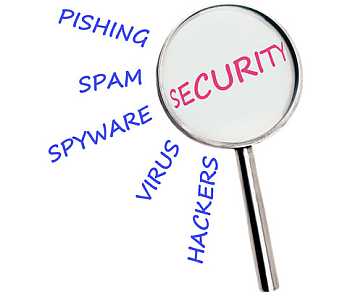How to Protect Your Identity Online – 5 Ways to Reduce Your Risks
 A recent survey reported by information control expert John Sileo found that 45% of consumers are most concerned about identity theft while online. However, 75% of consumers mistakenly thought that using a firewall while shopping online was adequate protection against cyber fraud.
A recent survey reported by information control expert John Sileo found that 45% of consumers are most concerned about identity theft while online. However, 75% of consumers mistakenly thought that using a firewall while shopping online was adequate protection against cyber fraud.
If you are one of these consumers and want to know how to protect your identity online, you should know that a firewall protects against unauthorized access into a network but does not necessarily protect all of the information flowing out of a network – especially if that information is not encrypted. A firewall is a good start to prevent ID theft online, but unless it is paired with anti-spyware and anti-virus protection as well as best practices and common sense, your identity is at risk.
There are several ways that identity thieves access your identity over the internet. For example, phishing scams reached an all-time high this past February according to the Anti-Phishing Working Group (pdf), and show no signs of decreasing. Social media is also a risk, since identity thieves can piece together your personal information and even guess your passwords based on personal information shared on these sites.
Sending information to unsecure or untrustworthy sites believing that a firewall will protect you as mentioned above is also a risk, since anyone can access unencrypted information with the right tools.
As internet use becomes more of a daily task, it’s easy to forget how the information we share online leads to risk. Here are a few tips to protect your identity online and reduce your risk of identity theft.
Protecting Yourself Against Identity Theft Online
If you need a refresher on how to protect yourself from identity theft on the internet, the first thing to remember is to share the minimum amount of personal information possible. If you’re one of those who hesitate before giving your phone number to a salesman, this should be easy; if not, be aware that the web makes it easy for people with bad intentions to make themselves look legitimate.
- Look for “https” in the web address. If you see “https” at the beginning of a web address, you are on a secure site that is encrypting the information being sent between the site and your computer. Your web browser can also validate https sites more easily than standard http sites. If you are logging in to a site or providing any personal information, use the https extension every time. Just be aware that with extra effort, malicious sites can use the https extension too.
- Hide your IP address. An IP address is a unique identifier for a computer, but it identifies more than the machine; it also provides location information such as your zip code. Identity thieves can use this to find out where you are in the world and steal additional information about you. Consider masking your IP address with a service like Anonymizer.
- Don’t reuse your passwords. The password security breaches on several major sites over the last few months should have you alert to the risk of using common passwords, but you should also avoid reusing your passwords for the same reason; a breach into one account could easily lead to your other online accounts in short order.
- Use only trusted sites. Even if you have comprehensive security software, you cannot always rely on that software to prevent you from visiting a malicious site. Malicious sites that download viruses and malware onto your computer or require you to enter personal information without reason can move web addresses multiple times a day, making it impossible for security software to keep up.
- Don’t click on banner ads. A growing online menace that threatens to undo your work learning how to protect yourself from online identity theft is legitimate looking popups and banner ads that warn you that your computer is infected. Never click on these banner ads or popups, because they will infect your computer. Try to shut them down using your task manager, then use your own security software to double check.
Now that you know how to protect your identity online, pair your protection against identity fraud online with protection in the real world. Identity Guard offers antivirus software included in the cost of membership in its comprehensive identity protection suite. Read more about the benefits of Identity Guard here, and remember to check back with Stumble Forward for more identity protection tips.



I really like your advice to not reuse passwords. I think that a lot of people reuse their password over and over again. While that may be good for those of us that don’t have too many things to log into, I think it can actually be harmful if you are trying to keep everything locked. As you said, it is easy to figure out your other passwords if they are all the same.